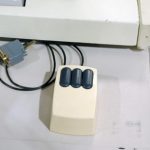Scientists 3D-Printed a Tiny Elephant Inside a Cell: A Breakthrough in Micro-Scale Engineering
In a development that sounds more like science fiction than science, researchers have successfully 3D-printed a microscopic model of an elephant inside a living cell. This astonishing achievement marks a major milestone in nanotechnology, bioengineering, and cellular research, showing just how far precision printing and manipulation at the cellular level have advanced.
The elephant itself, invisible to the naked eye, measures only a few micrometers—smaller than a red blood cell. It was created using an advanced form of 3D laser lithography, a process that uses tightly focused light to harden photosensitive material at a nanoscale resolution. Scientists used this technique to sculpt the figure directly inside a living cell, without damaging the cell’s structure or function.
This isn’t just a quirky experiment. While the image of a tiny elephant inside a cell has captured headlines for its novelty, the real breakthrough lies in the precision and biocompatibility of the printing process. Being able to print intricate structures at this scale inside living cells opens the door to a wide range of future applications.
One of the most promising uses is in cellular-level drug delivery systems. Scientists could one day create tiny devices that release medications in specific areas of a cell, allowing for highly targeted treatments with fewer side effects. Another potential application is cellular sensors—minute structures printed inside a cell to monitor changes in its environment, signaling early signs of disease or cellular stress.
The technique could also be useful in synthetic biology and tissue engineering, where researchers aim to build or modify biological systems for medical purposes. For example, printing scaffolds inside cells could guide their growth or behavior in controlled ways, potentially aiding in regenerative medicine or organ repair.
Importantly, the experiment demonstrated that the cell remained alive and functional after the elephant was printed inside it. This shows that the method is not only accurate but also gentle enough for future biomedical use.
The choice of an elephant, according to the research team, was both symbolic and playful. It demonstrated the complexity that the technology can handle, while also serving as a memorable way to present a highly technical achievement.
While we’re still years away from fully functional microscopic machines operating inside our cells, this achievement represents a first step toward that reality. The tiny elephant may be small, but its impact on science and medicine could be enormous.











